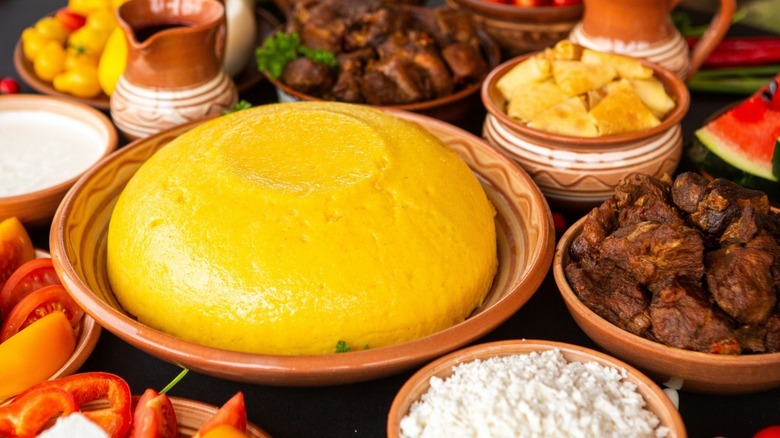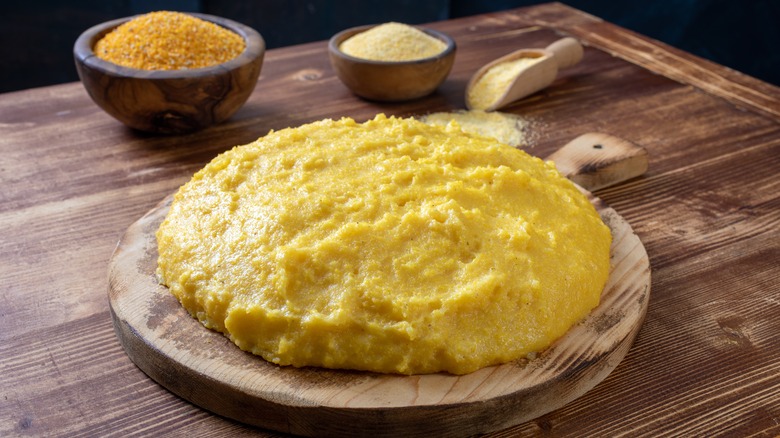The Delicious Romanian Polenta That Is A Hidden Culinary Gem
Even though many of us many know Romania as the land of Dracula or Vlad the Impaler, the Eastern European country's little known food landscape has just as much to offer as its beautiful rolling hills and pristine deltas. The food culture of the country has been influenced over the centuries by Turkish and Greek delicacies from the south, Slavic dishes from the north and east, and a scattering of European fare from countries like Germany, Italy, and Austria. The resulting cuisine represents some of the richest flavors and best kept culinary secrets in Europe.
One such dish is mamaliga, a seemingly unassuming corn flour dish that can be transformed to incorporate flavors as diverse as the land it originates from. Those of us with Romanian heritage probably remember our grandmothers making mamaliga on lazy Sunday afternoons — but for the uninitiated, this comforting dish is perfect for winter evenings by the fire or hot summer days on the patio paired with a salad, vegetable soup, and a delicious red pepper sauce.
Mamaliga: Romania's delicious answer to polenta
Even though the term mamaliga can sometimes be used as an insult in the Romanian language, don't let that fact put you off its taste. A multitude of mamaliga varieties can be found in various regions of the country, including mamaliga with a thick, porridge-like consistency popular in the South, or a heavy, cake-like texture in the North (via Cazare Bucovina).
No matter the consistency, mamaliga is a simple recipe and makes a great introduction to Romanian cuisine. The dish begins with corn flour that is carefully folded into a pot of boiling water, done slowly to avoid creating lumps in the batter. Anyone preparing mamaliga should also wear heat-resistant oven mitts and stand away from the pot while cooking, as the batter tends to get very hot and bubble up. Once the corn flour has completely incorporated and creates a smooth consistency, more flour can be added until the dish reaches the desired thickness (via Laura Laurentiu). When finished, mamaliga must be served piping hot, otherwise it will harden as it cools.
For an authentic Romanian twist, mamaliguta cu branza si smantana can be served with feta cheese, sour cream, or boiled eggs. The firmer mamaliga varieties, meanwhile, can be prepared with added sugar and cut into slices once cooled. This version of the dish, mamaliga cu lapte, is typically served with warm milk poured over the top. Savory or sweet, porridge-like or cake-like, this Romanian staple is sure to be a hit with anyone who tries it.

